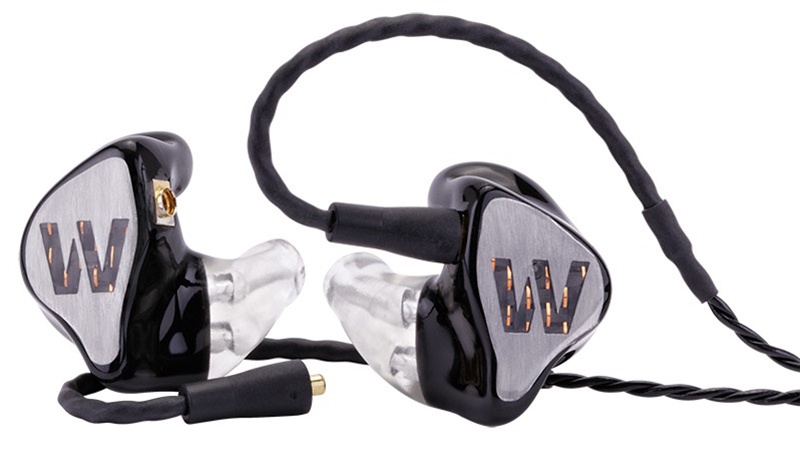Personal monitoring has been around for decades, but there are still many, many churches that have not made the transition from floor monitors (wedges) for a number of reasons.
Some of which are:
- Too expensive!
- Too difficult to implement.
- We have people who will never use them.
- We don’t fully understand the advantages.
These are common objections, but they all can be overcome with a little bit of knowledge.
It is a myth that they are too expensive. In-ear (personal) monitors have never been more affordable, as varied, and as easy to set up. In fact, in comparison to equipping each musician with a floor monitor, in-ear monitors have been more affordable for a long time. Yes, personal monitor mixer systems, that includes wireless transmitters and custom in-ear monitors can be extremely cost prohibitive for everyone but the largest churches, however, there are current technologies available that reduce the cost drastically… if you know how to assess them.
In-Ear Monitors: The Transition Is Easier And More Affordable Than You Know!
Employing personal monitors helps everybody in the church, not just the musicians.
For every floor monitor (or loud sound source) that is removed from the platform, you will help to yield a house mix that is more transparent. The loud stage levels occur primarily because musicians want to hear more in their monitors. They are also the primary cause of feedback. When one musician raises the level of their monitor the neighboring musician will not hear his monitor as well and will raise the level in response (retaliation). A volume war ensues. This wreaks havoc on the house mix. It has been determined that the house needs to be about 10 db louder than the stage level. If the stage is 100 db than the house mix has to be 110db.

You don’t want to be exposed to these levels for more than 30 minutes.

There is no doubt in my mind that in-ear monitors can solve the problem.
It helps the musician to be isolated from the loud sound sources such as floor monitors, guitar amps and drums. In fact, in-ear monitors on average will reduce the level of onstage noise (ambient) by -25 db. When used properly, (wearing both and not pulling one out), hearing health can be maintained and prolonged. By eliminating or mitigating the louder sounds on stage, it allows the house mix to be less loud and more transparent.
Lets’ start with the least expensive way of replacing a floor monitor with a personal monitor.
We all know what a floor monitor looks like:

The monitors in this image are active, powered floor monitors. They have amplifiers in them. An active monitor has advantage in that I don’t need to specify and purchase an amplifier. It’s already included. All I need to do is take a balanced, line level cable from the Aux/monitor out of the mixing console and plug it into the monitor’s input.
If you have a monitor like this you can take the cable out and plug it into a headphone amplifier like one of these…

Compare the cost: In some cases you could buy 3-4 headphone amps for every decent active floor monitor, at a minimum. Typical cost of a headphone amp like this is around $100.
We still need earphones for the musicians so that cost has to also be considered.
I strongly recommend that churches NOT buy the earphones for the worship team. I encourage churches to help the musicians purchase their own set.
Provide a stipend or a voucher for whatever you can afford and allow musicians to get the type of earphone they would like. When they invest in their own gear, there is a strong likelihood that they will take better care of it, because they personally own it.
Making an investment in their own personal monitors allows them to use them where and whenever they like: travel, with their own playback devices. This will allow the musician to get accustomed to the way they sound, and, even more important, the way they fit.
Everyone is different and universal earphones don’t really have a one size fits all.
Earphones that you buy off the shelf, typically come with different sleeves that will fit the ear canal for better or worse, or are more comfortable for some than others. This is a critical component in getting musicians acclimated to personal monitors. If a musician finds the earphone uncomfortable, he or she will not want to wear them.

Keep in mind that universal earphones will work for 80% of the population. There will still be some, where the sleeves may not work for them at all: they may be too tight or might not be large enough to fill the ear canal. We want a tight fit. We want to isolate what we hear in our ears from all the outside noise and if off-the-shelf earphones don’t fit as well as you would like, you may be a candidate for a custom earphone. The advantage to custom is you get a perfect fit. The downside is that they require a trip to a local audiologist to have a mold made of the ear canals and they typically cost more. The upside is you can get custom colors and more drivers (speakers) than would normally come in a universal set.
The advantage of custom earphones is a PERFECT FIT, not superior sound necessarily, or even more protection (more isolation).
Universal Earphones

Audio-Technica E-Series Brochure
Custom Earphones

Westone Universal and Custom Earphones
Sharefaith would like to offer our subscribers a special discount when purchasing Westone products.
Use Promo code WMD1720.
Offer expires 12/31/2017.

In the next article, we’ll discuss the setup of various systems and how to control them. If you have any questions in the meantime, drop me a line at doug@worshipmd.com. If you would like to arrange a demo of an in-ear monitoring system, I can also arrange that.
Be blessed.

